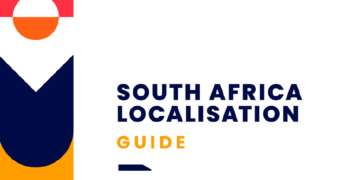Katrina Esau Ouma, a holder of the Order of the Baobab in Silver award from the South African Presidency, is a nonagenarian on a mission to preserve the identity and culture of her people through the teaching of the indigenous N|uu language which is under the threat of extinction. In 2021, together with her granddaughter, Claudia Synman, she co-authored a N|uu children’s book titled Qhoi n|a Tijho (Tortoise and Ostrich), a San folktale about a race between a tortoise and an ostrich that Katrina first heard as a child. Her goal is not only for people to learn the language or safeguard its cultural significance but by extension to provide a data pool that will enable future references in the study and development of the language. Her efforts will enable language service providers to provide adequate services for clients with interest in this language. In expressing the struggles of creating data pools for indigenous African languages, Oluwadamilare Igbayiloye, a Yoruba language coach, content creator and founder of Akonilede Yoruba – an online platform for learning Yoruba, shares her experiences as a language service provider here with Nat King Taylor on Africa’s LSP Podcast by Bolingo Consult. In this article we address language localization in a multilingual society or a society with one language spoken in different dialects just like Katrina Esau’s N|uu language which is one of the dialects of the San group of languages.
Language localization
While localization broadly is basically a process of translating and adapting to material and immaterial cultures of a place through tools such as softwares, games, websites and other multimedia, language localization is more specific. In business, language localization ensures that products and services are adapted in the languages and the cultural and geographical underpinnings of the target markets. The focus of language in this context is communicating a product or service rather than just translating words from one language to another. Translation, while it plays an important role in localization, does not necessarily put into consideration other domains that are relevant for localization like culture, ethics, and beliefs of a people, which are key drivers of buyer behaviors. Thus, each targeted market calls for a unique language localization strategy that pays particular attention to considerations of the languages and how they are used in contexts. Oluwadamilare alludes that even Yoruba as a language has unique characteristics like one word meaning different things depending on the intonation used on the word. Situations like this if not keenly addressed in a language localization strategy may cause misunderstandings between the investing party in question and the target market. What then are the considerations to be made when creating a language localization strategy for a multilingual and multi dialect society?

Localization considerations for a multilingual and multi dialect society
Data pool
Some key issues are worth considering in language localization. First, one of the most useful steps while creating a language localization strategy is to have a data pool for language vocabulary fit for your target market. Other than that, investing in an indigenous translator with proper training and understanding of the language dynamics of your target market is worth the coin. Localization companies like Bolingo Consult have done the heavy lifting by sourcing translators and interpreters with indigenous knowledge of languages plus a team of professionals who understand translations and cultural adaptations in the creation of a language localization strategy within multilingual and multi dialect societies. While African languages are still under development for data pools to enable creations of culturally adaptable softwares, we cannot fail to mention the unveiling of the N|uu-language dictionary, a collaboration between Katrina Esau Ouma and the University of Cape Town, which bestowed on her a honorary doctorate in recognition for her continuous efforts towards reviving the endangered N|uu-language. The dictionary equally has a digital version and a mobile app, the Saasi Epsi mobile app, that one can easily access wherever they are.
Standardization
Second, in every multilingual and multi dialect society, there is at least one common language of communication by a majority of the people. This consideration works in places where there is an official language to use for both formal and informal situations. For instance, Oluwadamilare shares that even though Yoruba is one of the major languages spoken in Nigeria, it has its unique dialects for different communities that speak it. And because of this there is a standardized Yoruba from Oyo that is spoken by all and also taught in schools. Her Yoruba platform, Akonilede Yoruba is a useful resource for teachers to get guidance and learners to learn something new or improve on their Yoruba. In the article ‘The rise and rise of Lingala’ we encountered two different dialects of Lingala, the ‘mission lingala’ and the purported original Lingala that continue to clash in existence due to the struggle to have a standardized lingala to be used adequately in both writing and speaking. Nonetheless the original lingala has continued to outshine the ‘mission lingala’, developed by the missionaries in the Democratic Republic of Congo, who claimed native lingala was insufficient in lexicon grammar. An elaborative conversation by Dr Michael Meeuwis, a Lingala language and Africa Social Linguistics expert at Ghent University, about this can be found on Africa’S LSP Podcast, hosted by Nat King Taylor. Even the African Union approved Kiswahili has dialects in all the places it is spoken, yet still there is a standardized Kiswahili that is spoken and taught in schools.
Awareness of target market
Third, note that even with the efforts to adapt the language and cultural considerations in multilingual and multi dialect communities, buyer behaviors of the target market are not easily defined. It is important that while creating a language localization strategy one must invest in the services of a language service company like Bolingo Consult with an expertise in mapping out target markets beyond language and culture, having been in the language services industry long enough to have the skills, expertise, networks, tools, and guidelines to create a sustainable language localization strategy that not only help businesses understand their target markets but also enable them refine and channel products or services to meet the needs of the right market. Beside Bolingo Consult, professionals like Oluwadamilare, Katrina, Dr Meeuwis and others in the language services industry continue to share better considerations for maneuvering societies that are multilingual and multi dialect through their various contributions.
Conclusion
Language localisation is a way to appreciate local cultures and thus legitimize business processes and products. It provides space for businesses to penetrate local contexts with less complications and facilitates interaction between local markets and businesses, enhancing business sustainability in a competitive environment. For its huge influence on business performance, legitimacy, and survival, language localization though requires purposeful investments and careful considerations of partners such as language translation and localisation partners to work with.










